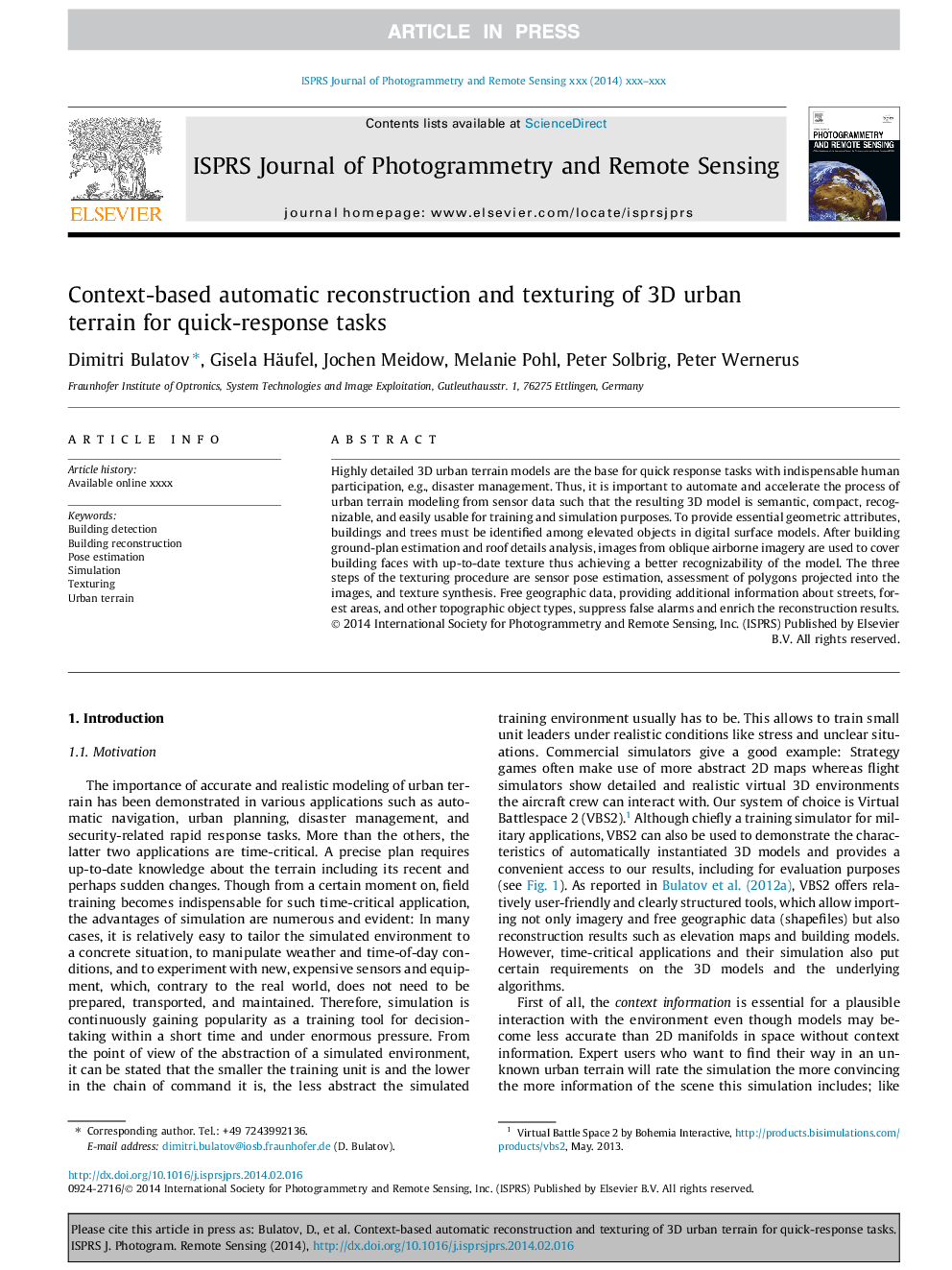| Article ID | Journal | Published Year | Pages | File Type |
|---|---|---|---|---|
| 6949662 | ISPRS Journal of Photogrammetry and Remote Sensing | 2014 | 14 Pages |
Abstract
Highly detailed 3D urban terrain models are the base for quick response tasks with indispensable human participation, e.g., disaster management. Thus, it is important to automate and accelerate the process of urban terrain modeling from sensor data such that the resulting 3D model is semantic, compact, recognizable, and easily usable for training and simulation purposes. To provide essential geometric attributes, buildings and trees must be identified among elevated objects in digital surface models. After building ground-plan estimation and roof details analysis, images from oblique airborne imagery are used to cover building faces with up-to-date texture thus achieving a better recognizability of the model. The three steps of the texturing procedure are sensor pose estimation, assessment of polygons projected into the images, and texture synthesis. Free geographic data, providing additional information about streets, forest areas, and other topographic object types, suppress false alarms and enrich the reconstruction results.
Related Topics
Physical Sciences and Engineering
Computer Science
Information Systems
Authors
Dimitri Bulatov, Gisela Häufel, Jochen Meidow, Melanie Pohl, Peter Solbrig, Peter Wernerus,
